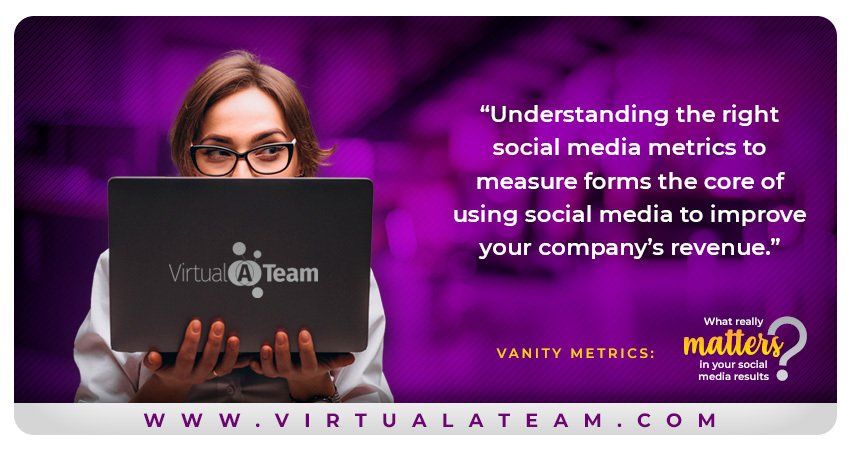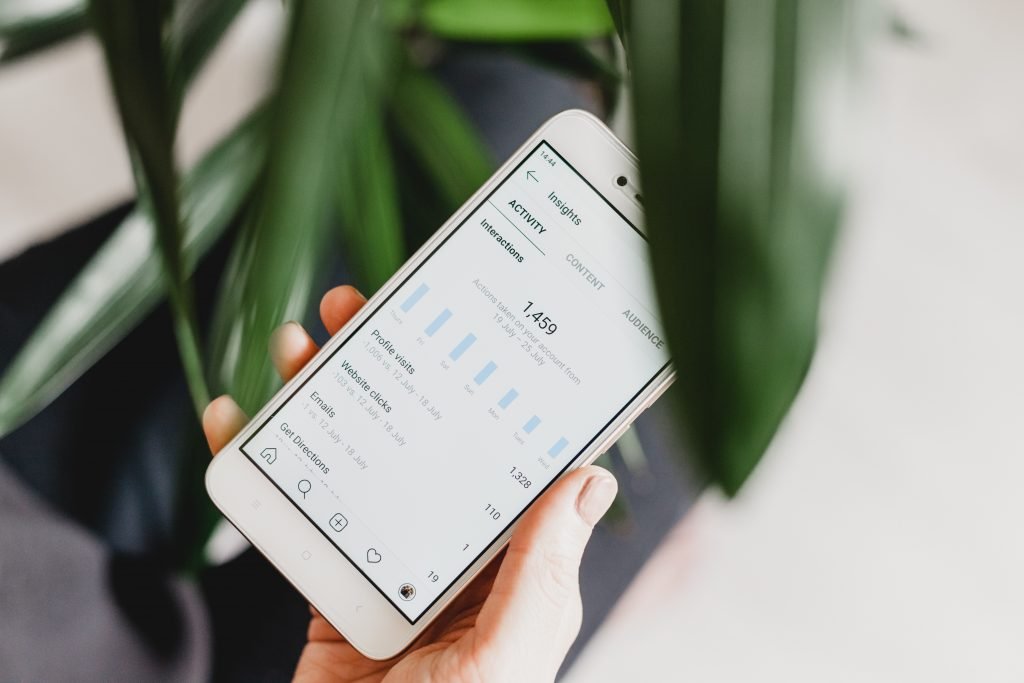Have you ever tried to bake a decadent chocolate cake? Several recipes exist that help novice bakers whip up a basic chocolate cake that tastes…okay. However, those who want to create a mouth-watering cake must kick these recipes up a notch that requires a bit more ingredients. The basic recipe still stands strong, but the proportion of ingredients is put on overdrive. Metrics for social media are like that decadent chocolate cake. Setting up your social media profile and consistently posting content is synonymous to using a basic chocolate cake recipe; doing this lays the foundation but won’t help your social media profile achieve maximum potential.
Metrics help you make informed decisions about how to develop your social media profile. It’s like stepping your game up from a very basic chocolate cake to a chocolate cake that’s oozing with chocolaty goodness….mmmmm.
Your stomach may be turning as you imagine the taste of that decadent chocolate cake in your mouth. Let’s not lose focus. You’ll only be able to experience the sweetness of a high social media ROI for your brand if you actively apply social media metrics.

What are the metrics for social media?
Social media metrics are essentially key performance indicators (KPIs) for your social media posts. Margaret Rouse from Search Content Management sums it up nicely by saying, “Social media metrics is the use of data to gauge the impact of social media activity on a company’s revenue.”
Understanding the right social media metrics to measure forms the core of using social media to improve your company’s revenue. The beauty of it is that most social media platforms make it easy to identify these metrics with their easy-to-use analytic tools.
What Social Media Metrics Should You Pay Attention To?
Regardless of the social media platform, there are some core metrics that are important to track.
The top 4 metrics are:
1. Volume/Organic Mentions
How often is your brand being mentioned on social media? What conversations are people having about your brand?
Word-of-mouth advertising is both the best (and the worst) form of advertising. It’s also the type of advertising that potential customers tend to listen to the most. Social media allows customers to share content and express thoughts about the brands they love (and hate) freely. This makes word-of-mouth advertising a prominent feature of social media.
Netflix capitalized on the power of word-of-mouth social media advertising by reposting Instagram pictures from an adoring fan. Laura Iz took pictures of her daughter, Joey, dressed as characters from Netflix’s Stranger Things. She posted these pictures on Instagram and used the #StrangerThings. Netflix noticed and reposted the picture. The repost created a buzz and gave the Netflix show additional publicity.
Your aim is to be on the “love” spectrum. Understand your customers and followers so that you can create content that they’ll want to share and talk about. The more in tune you are with what they’re looking for, the better the return on your investment.

2. Reach
In social media, reach is a measure of your potential audience’s size. It’s all about how those likes, mentions and shares help you reach a wider audience. Here are some questions you should answer:
- How many people are sharing this content through retweets, reposts and shares on Facebook or LinkedIn?
- Can you calculate how many people have added this content to their favorites list?
- How many people interact with the post?
Stick a pin for a sec. The last question listed is a powerful question. It speaks specifically to the level of engagement in your posts. Looking at the level of engagement extends beyond solely considering the number of likes or shares the post receives.
A better measure is the percentage engagement rate. This is calculated by dividing the number of likes or shares by the total number of followers. For instance, a page with 50,000 followers that gets 30 likes on a post would have an engagement rate of 0.06 percent which is pretty dismal.
Such a low engagement percentage also highlights an important point. The number of followers a page has doesn’t truly measure how well the page is performing. Pay close attention to your page’s reach and, by extension, the level of engagement it receives.
3. Influence
How valuable is your social media page? Can you actually entice your followers to act? It’s one thing to have a lot of followers, but the true test comes in your ability to influence these followers to act. Influence is one of your most valuable social media metrics.
Influence extends beyond your brand’s social media pages. Influencer marketing has quickly grown into one of the most common social media marketing strategies. In fact, a study conducted by Linqia in 2016 revealed that 94 percent of marketers found influencer marketing to be effective.
Social media influencers build their brands on the power of influence. In turn, they subtly influence their followers to purchase products from the brands their endorse. Sperry, manufacturers of the infamous boat shoes that many men adore, understood the value of influencer marketing and used it to develop visual content for their official Instagram account.
Here’s how the campaign worked. Sperry identified 100 micro-influencers who were already sharing high quality photos of their shoes on Instagram. They then invited these micro-influencers to develop visual content specifically for the brand’s Instagram account. The initiative resulted in a major boost in Sperry’s followers.
4. Market Share in Online Discussions
You aren’t operating in isolation in your industry. There are other brands competing with you for the same audience. These competitors may be doing a better job of getting that audience to share their content and have positive discussions about their brand online. How do you measure up to the competition?
Competitor research helps you identify your brand’s weaknesses, strengths and everything in between. It’s good to determine how your competitors are influencing people to have the right conversations online about their brands. It’ll help you determine what you can mimic and what you can do better so that you can dominate the online conversations in your niche.
This metric should, however, be used with caution. The tools used to track it are expensive. It’s also possible that the metric can be different depending on the source; the PR team may have a different figure from the sophisticated software. Finally, it’s a difficult metric to track.
What Social Media Metrics Aren’t Worth the Attention?
It’s easy to get caught up in the hype of what you think should be the most important social media metrics. However, there are some social media metrics that can trick you into thinking that you either aren’t doing enough or your social media game is on point.
1. Number of Followers
This is by far the most misunderstood social media metric. It feels good to have a large follower base because it shows that people are interested in your brand. However, it’s more important to measure the engagement rate, reach and how often people visit your page.
It is also more important to look instead at your follower growth rate. This is the percentage of followers you gain each month. Consider Success Lifestyle Magazine, a small digital magazine that started with a measly 92 followers. After a campaign, the number of followers in January 2019 grew to 200. That’s a 117 percent increase!
Tracking this percentage month-on-month will hep you determine how healthy your social media page is. Keeping the percentage at 10 percent and above is good for your brand.
2. Bounce Rate
It’s important to know how many people are leaving your social media page without either interacting with the content or becoming a follower. This information can help you test different types of content to determine what will get the best response.
However, you must remember that social media users have short attention spans. A social media page is more about building brand awareness than it is about making a quick buck. The same people who initially bounce from your site may come back later because they remember something about your brand.
 3. Page Views
3. Page Views
There are times when you will see a spike in the number of page views. However, this may not necessarily be the result of your marketing efforts. It could be a combination of factors such as organic mentions and increased awareness of your brand through word-of-mouth advertising. Focusing on the finer details is what ultimately matters.
4. Number of Newsletter Subscribers
Coaches often use social media to expand their newsletter subscriber list. Having a large newsletter subscriber list is good for several reasons. Chief amongst these is being able to introduce new packages and deals to a direct and engaged audience.
The issue with focusing on the number of newsletter subscribers is that this metric doesn’t paint a true picture of people who become paying customers. Therefore, it is more important to pay attention to the conversion rate as a result of newsletter subscriptions.
Platform-specific Metrics
You’ve gotten a glimpse into the most (and least) important social media metrics for any social media platform. Let’s now pay closer attention to platform-specific metrics that you should track. The focus will be on the 4 social media platforms that coaches most often use: Facebook, LinkedIn, Instagram and Twitter.
The Top Metrics to Track on Facebook
Pay attention to the metrics discussed in section 1.1 and these additional metrics:
- Click-through Rate
This metric isn’t as important as the others mentioned in section 1.1 but it still packs a punch. It tells you how many people were interested enough to pay attention to your content.
A low click-through rate may mean that you haven’t completely understood what your audience wants or you haven’t presented content in the right way. It’s an opportunity to go back to fine-tune your content so that it grabs the attention of more followers.
- Negative Feedback
There are some followers who won’t like some of the content you post. They express their discontent by hiding a post, hiding all future posts from your page, unliking your page or reporting the content as spam. It’s good to know how many followers use this metric with your posts.
Furthermore, posts with high negative feedback reach less people because of how the Facebook algorithm works. You can find your negative feedback metrics by clicking on the number of engaged users in your Page Insights.
- Video Retention
Videos form an integral part of content marketing. According to Render Forest, “marketers who use video grew revenue 49% faster than non-video users.” Smart coaches use videos on their social media pages.
There is one important thing to monitor when gauging the success of video content; how far into the video do most people watch? For instance, you post an 8-minute video but people only watch the first 30 seconds. You need to discover how to influence followers to watch the video for a longer period.
The Top Metrics to Track on LinkedIn
Pay attention to the metrics discussed in section 1.1 and this additional metric:
- Follower Demographics
This is an important metric to track on any social media platform. However, it’s particularly important to track on LinkedIn. You must determine if you’re reaching the right groups of professionals. Here are some specific features of follower demographics that you should note:
- The follower’s role in his or her organization. Is he or she a high-level executive, mid-level employee or at an entry-level position?
- Do your followers primarily work in large, medium or small businesses?
- Which industry do most of your followers come from?
Using follower demographics with your engagement rate will help you tailor content specifically for the type of professional your brand attracts.

The Top Metrics to Track on Instagram
Pay attention to the metrics discussed in section 1.1 and these additional metrics:
- Comments per Post
Comments are very hard to get from followers on social media. Therefore, a follower commenting is an indication that the post is so interesting that something had to be said. Tracking the number of comments per post helps you measure the impact of your content.
An increase in the average number of comments per post month-on-month is a good indication that you’re doing something right. You need to pinpoint what it is and ensure that you’re consistent. However, if this number decreases you should determine what caused the change and how you can correct it.
- Instagram Stories Engagement
Instagram Stories is a unique feature of Instagram. It’s like a merger between SnapChat and Instagram since Instagram Story posts only last for 24 hours. People won’t view your Instagram Story if your brand isn’t interesting enough.
There are 2 metrics that you should pay attention to when looking at Instagram Stories: reach and exits. Reach tells how many followers viewed your story. Exits tell the slide of the Instagram Story where people left. A high number of exits on a slide is a warning sign.
The Top Metrics to Track on Twitter
Pay attention to the metrics discussed in section 1.1 and this additional metric:
- Hashtag Performance
Hashtags are prominent features on both Instagram and Twitter. Branded hashtags are often used by companies to generate social media buzz about the brand. It’s important to track the performance of these branded hashtags.
Taste a Piece of the Tantalizing Social Media Metrics Chocolate Cake
Social media metrics are important for the growth of your brand’s online presence. Some of the key metrics for you to consider are:
- volume/organic mentions
- reach
- influence
- market share in online discussions.
There are other platform-specific metrics that you should also track. Let a capable virtual assistant help you put on your social media A-game.



 3. Page Views
3. Page Views